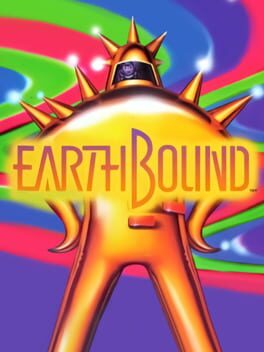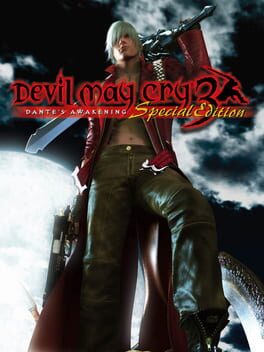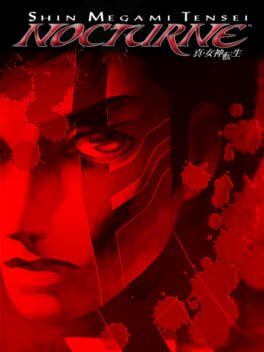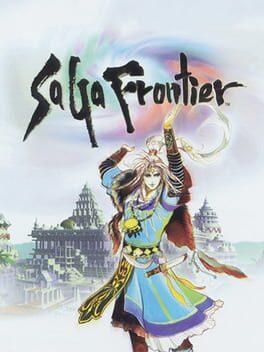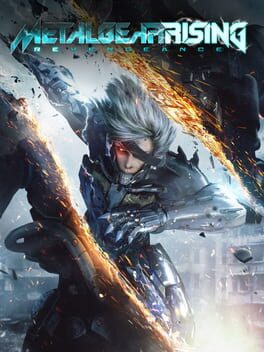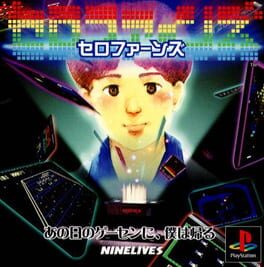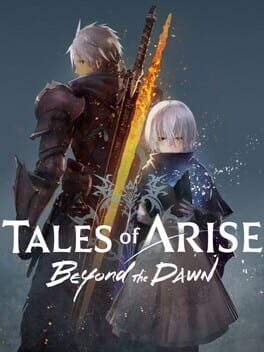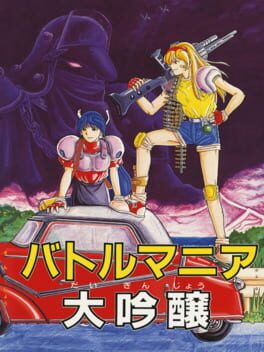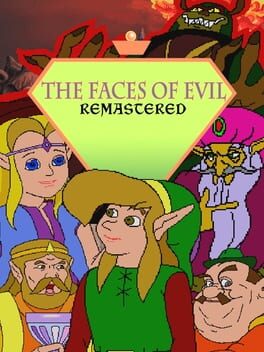EphemeralEnigmas
If you're interested in reading detailed posts about obscure, strange, forgotten, and interesting games, check out my blog called Ephemeral Enigmas via the link in my profile!
Badges

Trend Setter
Gained 50+ followers

Loved
Gained 100+ total review likes

On Schedule
Journaled games once a day for a week straight

GOTY '23
Participated in the 2023 Game of the Year Event

2 Years of Service
Being part of the Backloggd community for 2 years

Popular
Gained 15+ followers

GOTY '22
Participated in the 2022 Game of the Year Event

Well Written
Gained 10+ likes on a single review

Best Friends
Become mutual friends with at least 3 others

Noticed
Gained 3+ followers

Liked
Gained 10+ total review likes

Organized
Created a list folder with 5+ lists

Listed
Created 10+ public lists

Epic Gamer
Played 1000+ games

Elite Gamer
Played 500+ games

Shreked
Found the secret ogre page

Gamer
Played 250+ games

N00b
Played 100+ games

Roadtrip
Voted for at least 3 features on the roadmap
Favorite Games
2178
Total Games Played
116
Played in 2024
6883
Games Backloggd
Recently Played See More
Recently Reviewed See More
The main story of Beyond the Dawn revolves around a new character named Nazamil who exists in a unique spot within the game's deeply conflicted world. Confronting racism and finding ways to end and move past it were the core themes of Arise and BtD partially explores that through the lens of Nazamil and her Dahnan + Renan blood. When the story is focused on the team's growing bond with Nazamil and how they help her process the trauma she's experienced as a result of her past, it works quite well and certainly makes the DLC feel substantial enough as an epilogue. It doesn't really "continue" the story so much as it serves as a new challenge for the team to confront, which also shows how much they've grown since the start of the game. Everyone's deeply compassionate and understanding as a result of all they've been through and everyone's focused on thinking about their future and doing what they can to march towards it. Seeing the team take in Nazamil as one of their own instantly like she's their adopted child is really sweet! It's all very reminiscent of Star Ocean 5's story, actually, at least that's where my strange brain immediately went. That's not a bad thing, though, because I am a firm SO5 defender! To get back on track, things become less consistent when you deviate from the main story.
The main story itself isn't particularly long, consisting of three dungeons (which are new, thankfully) and a healthy amount of backtracking to talk to familiar NPCs. On its own, this is fine enough if you think of it as a refresher tour of the base game. You get to check in on every major town, see how everyone's doing, and be on your way without getting dragged down by anything. However, the game soon starts showing its hand by gradually plopping more and more sidequests onto your map. I'm a sidequest guy for sure, I typically always do them, but when they're the majority of your time spent with the game (there's 40 of 'em!) and they're almost all simple fetch quests, you start to wonder if they all needed to be here! Considering that there aren't any new artes to learn, playable characters to try, or non-palette swapped enemies to deal with, the only new thing you're getting out of these are the stories they tell, which are rather mixed in quality overall.
Almost every sidequest revolves around Dahnans and Renans learning how to live with themselves and each other in a post-slavery world. The big exception is a multi-step "EX Quest" chain of helping Alphen learn about weddings so that he's ready to propose when the time comes. It's definitely more fetch questy than it should be, but the story it tells is surely one of the DLC's highlights. The way most quests usually shake out, though, has you either reminding someone that racism is in fact very bad or helping people find ways to improve the state of the world. Some of these are genuinely sweet, such as spreading a donut recipe across cities and cultures, encouraging residents to form a band, or helping kids get along after their differences cause a fight, but others can sometimes feel laughably naive. Maybe it's just me, but the solution to getting a town that has a dark history of incentivizing people to rat on each other to drop all their baggage probably isn't as easy as putting them all in the same room and ordering drinks! A particularly funny moment happens late in the story; after a sequence where Alphen gives a speech telling the Dahnan and Renan people that they can't rely on him for every little thing ever because they need to become self-sufficient in order to grow, the game immediately gives you a bunch of sidequests about doing various menial things for the people you literally just spoke to! The base game often has its heart in the right place regarding its takes on societal and racial issues, but it undeniably stumbles in certain key moments and BtD is similar in that regard. I think it does an overall good job of encouraging the strength of humanity when it bands together, but if the imperfections of the original story grinded your gears (a valid stance), this probably won't change your mind.
This time around, there are sidequests tied to the main cast that'll actually upgrade their boost strikes if you do them. This is a really nice incentive to do them because the upgrades are pretty huge, but the quests themselves aren't always exciting explorations of the characters like they purport to be. Alphen and Law get to literally confront their inner demons through challenging solo battles as they learn how to reconcile with their increasingly complex place in society and the greater burdens placed upon them, whereas characters like Kisara and Rinwell get a pair of simple quests that feel indistinguishable from ordinary sidequests. Considering that the group dynamic is so important to the success of this game's writing (and the Tales series as a whole, really), it's a shame that not every character gets the same level of treatment. The "EX Quest" idea is heavily underutilized and could have surely been used in place of some of these quests to create fewer but more meaningful ones. I was really surprised that Nazamil never got one, but since she's not actually in the party for much of the story, I suppose it can't be helped.
Beyond all that, there really isn't much more to cover with Beyond the Dawn. The gameplay is unchanged (you even have to rebuy and relearn all the same artes and skills!), the dungeon design is consistent with the base game, most of the music is reused, and there's little incentive to explore past the sidequests since all of the existing towns have the same structure. The final boss is really cool, at least! There's nothing exceptionally wrong with this DLC, but it's a tough sell to anyone but those who greatly enjoyed Tales of Arise and are as hungry for a new Tales story in any capacity as I am. I would say I'm in that group, but if you look around at the "online discourse", a lot of people got sick of it real hard before it was over! That's why I'm so surprised this DLC even exists. It took surprisingly long to make and was sent out to a market that doesn't come off as interested in it in the slightest. The acquisition rates for every trophy in the DLC never exceed 5%, and that's on the PS5!! As a "sequel" to Arise, this definitely isn't what anyone would be looking for, but if you'll allow me to be generous for a minute, it at least functions as a cozy little avenue to see these characters one more time. I suppose I'm a bit of a melancholic softie, but I can't deny that I got satisfaction out of seeing this crew enjoy each others' company one last time before they once again go their separate ways. Just as they think about and take action towards their future even if doing so is bittersweet, I too eagerly await to see what lies beyond the dawn for the Tales series. Though the highs and lows, I'll be there.
The main hook of Radirgy's gameplay is how it completely changes and recontextualizes the purpose of the bomb. In most shmups, a bomb is a very limited resource that you either use to get out of a bad spot or hold onto if you get points for not using them. In Radirgy, your "bomb", the ABS Net, is more like a shield that you deploy as often as possible. By hitting enemies (preferably in their weak spots), you get juice, and then said juice fuels the ABS Net, which makes you temporarily invincible, grabs all on-screen items for you, increases your scoring multiplier, and still lets you build up more energy for the next ABS Net. This single mechanic turns Radirgy into the most frantic and aggressive shmup I've ever seen and it's an unbelievable sight to behold!
Once you get the hang of things, you'll be using your ADS net near constantly as you charge headfirst into enemies, chop them up, and keep pushing forward without hesitation. The game makes some masterful choices to complement this as well, such as letting you slash and shoot simultaneously and making it so contact with enemies doesn't hurt you. It sounds unintuitive if you're used to other shmups, but all of the design choices do an excellent job of communicating the correct way to play. Even for me, someone who has only been really getting into shmups seriously in recent years, I was extremely impressed by how enticing the act of practicing this game was despite its intimidating appearance. There are still loads of ridiculously elaborate bullet patterns that'll crush you dozens of times, make no mistake, but if you're good enough, you can plan to negate a whole lot of them, which is such an amazing feeling!
Even with a mechanic as powerful as the ABS Net, Radirgy is a ridiculously difficult game. It took me about seven hours of practice to beat it once on the default settings because the Gamecube version doesn't let you have infinite credits! Life extensions are a rare treat that have to be earned, bosses are frequent (especially from stage 3 onwards), and bullet patterns eventually become so absurd that the intention is as simple as "ABS Net or die unless you play these games for a living". The unlockable mode, Manpuku, lets you get higher scores, but forces you to do a 1CC! It's always fair and you'll always learn something new when you play, but it's undeniably an extremely harsh challenge and not what I'd call friendly for total newcomers or those without the drive to practice. ABS Net is a wonderful mechanic, but using it at a bad time can really sting if you leave yourself in a bad spot with no energy. To smartly prevent its difficulty from becoming tedious, Radirgy goes with a Caravan-style structure, which means that it's both scoring focused and short to finish. A playthrough, win or lose, is never going to take more than 30 minutes, which was so motivating for me. Sure, I kept dying and dying and dying, but the fact that jumping back in was so simple and quick made this game an obsession of mine for a whole week!
If you're like me and you went through a phase where you needed to be convinced of the "worthiness" of this genre (I was a dumb kid once, you know...), Radirgy is one of the best cases you can make for the diversity of the genre. It's incredibly elegant in its design, distinct and loud in its personality, and oh so exciting to play. ABS Net is legit one of the coolest mechanics I can think of in video games and I dearly want to see more games try a similar thing. I tried Radirgy on a whim not knowing what to expect and now I can safely say that it's one of my favorite shmups, right up there with the likes of Air Zonk and Mushihime-sama. If you've got the stomach for the challenge, I bet that this could become one of your favorites, too.
If you're familiar with YouTube Poops, I was the kind of dorky kid that chugged those things down real good. I would watch so many of them and I just couldn't get enough. Seeing these absolutely ridiculous looking takes on characters like Mario and Link that I had known for years always gave me a good laugh and it got to the point where friends and I will still break out random quotes from the poops and the actual source material alike. Even in their original poopless form, the cutscenes in the Mario and Zelda CD-i games are still hilarious! So hilarious, in fact, that a game released this year, Arzette: The Jewel of Faramore (made in part by the same person who made this remaster), used them as its most compelling hook! These cutscenes are truly special, but there are actual games beyond them. Said games have long been the butt of jokes by reviewers and YouTubers, but when you actually sit down with them, are they really so beyond redemption? It turns out the answer to that is no and we have Dopply to thank for making that conclusion easier than ever to come to.
The first two Zelda games for the CD-i (this one and Wand of Gamelon) play in a way that resembles Zelda II. This is a good thing because Zelda II is my favorite one! They're certainly not as tightly designed or challenging and magic isn't a thing, but the general skeleton is there, which is still appreciated. Speaking of skeletons, this game is still very much a Zelda game once you look past its legendary presentation. You go to various areas in the world, find items that let you explore new areas and defeat new foes, and you ultimately go on to defeat Ganon. You start off very weak and end up becoming a force of nature that can spam deadly ranged attacks, so even with the different style, that form of progression the series has always done well is still here. You get so strong that all it takes to defeat Ganon is throwing a book at him!
Even if the combat is simple, the variety of items you get is as satisfying as you'd expect. Some Zelda staples like bombs and the Power Glove are here, but there are some interesting new items mixed in. A rope lets you create spots to climb upward wherever you want, which can cleverly cut down on the game's tendency to want you to take the long way around things. Snowballs and Firestones replace arrows and magic, which might sound like a downgrade, but the sheer speed at which you can toss them (if you stock up) makes short work of any enemy. The winged helmet predates the Roc's Cape by several years with its ability to let you glide across gaps. Even though I've emphasized the power you can gain, Faces of Evil still finds ways of forcing you to be careful. The number of hearts you get for this adventure are extremely limited and the canteen only lets you carry one healing item, so this isn't a game where you can come rolling in with four fairies in bottles and effectively be invincible. Instant death pits litter most stages, which when combined with enemies that love to throw huge projectiles, can make finding your footing surprisingly difficult. It's not nearly as hard as Zelda II, but it still has some of that methodical swordplay that makes it work so well.
Perhaps moreso than several other Zelda games, the land of Koridai is legitimately strange and compelling to explore. Every single person you meet is some kind of freak that's way too eager to touch Link, creepily smile at him, or go on about some nonsense that the player won't have any context for right away. Except Morshu, that is; he's not a freak, he's a national treasure! This is the only Zelda game (well, and Wand of Gamelon) where encountering NPCs is just as fun as finding new items! The environments themselves are really interesting, too. There's a unique, hard to describe "lived in" nature to each level. Loads of detail can be seen in the backgrounds, especially when you enter buildings, which have all kinds of random little items in the background. It's maybe not what you'd call ~environmental storytelling~, but it gives every single screen a handcrafted, remarkably detailed feel, as if each one was an artist's canvas for them to do with as they please. Just the act of exploring is such a joy because you're guaranteed to see something you've truly never seen before, which is more than a lot of games can say.
It's worth quickly mentioning the upgrades that come with this remaster because they really do make a difference. Aside from expected niceties like enhanced image and music quality, the remaster has an added tutorial and an optional mode that includes some modern QoL like infinite lives and better checkpointing. If you're one of the rare folks who have mastered the original game, there's even a hard mode built in the image of the "Hero modes" added to official Zelda remasters. If you can beat that, you get an entirely new playable character complete with unique animations and spritework, which is a seriously delightful level of effort!
The whole package really shows just how much respect Dopply has for the CD-i and its Zelda games. It's easy for people to take one look at the CD-i and dismiss it, but perspectives like this in which people truly take the time to examine the positives of what the platform was doing are so valuable. By being humble enough to not see it as something to "fix" from the ground up to prove a point but rather something to use as the basis for a creative experiment, Dopply has proven that there's legitimate beauty in what the CD-i was doing. Faces of Evil, whether it meant to or not (I'm sure it didn't), serves as an example of what Nintendo once was in the eyes of those who have seen them grow into the obnoxiously litigious behemoth that they are today. Nintendo used to have moments of experimentation, weirdness, and "mistakes" that they simply don't now. They're a megacorporation and megacorporations are not your friends, but they absolutely were "fun" in a way that they aren't now. Things like the live action Super Mario Bros. Movie, the Game Boy Printer, Mario Paint, ROB, the Virtual Boy, all have a raw creative energy that takes risks in ways that they wouldn't dare consider now. Faces of Evil is a way to tap back into that fun period of Nintendo history, that period where I consumed the heck out of YouTube Poops, and as short as said reminiscence may be, it's an opportunity that I find impossible to say no to.
